1,576 days, 2,409 entries ...
Newsticker, link list, time machine: HOLO.mg/stream logs emerging trajectories in art, science, technology, and culture––every day
UC San Diego’s Mandeville Art Gallery opens “Bodily Autonomy,” Lauren Lee McCarthy’s largest solo show in the U.S. to date. Curator Ceci Moss brings together two major series of works—Surrogate (2022) and Saliva (2022)—in which the Chinese-American artist examines bio-surveillance through performances, videos, and installations. A newly commissioned Saliva Bar, for example, invites visitors to reflect on data privacy, race, gender, and class as they pertain to genetic material over traded spit samples.
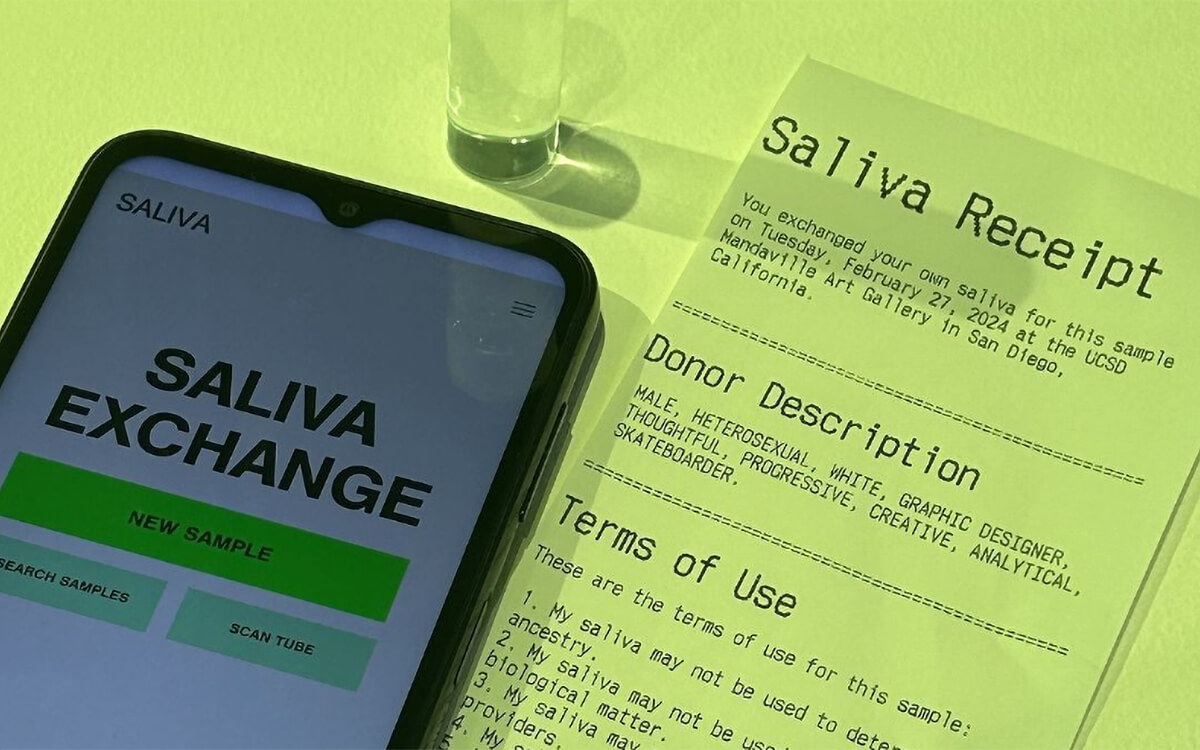
Gala Hernández López’s sci-fi documentary for here am i sitting in a tin can far above the world (2024) premieres at Berlinale. In the double-screen collage of YouTube videos, archival images, and 3D animations, the French artist-researcher and filmmaker explores the links between crypto culture and cryogenics as two speculative technologies that exploit the future. A key narrative figure: American extropian and cypherpunk Hal Finney, who, in a fictional future, implements societal biostasis for economic gain.
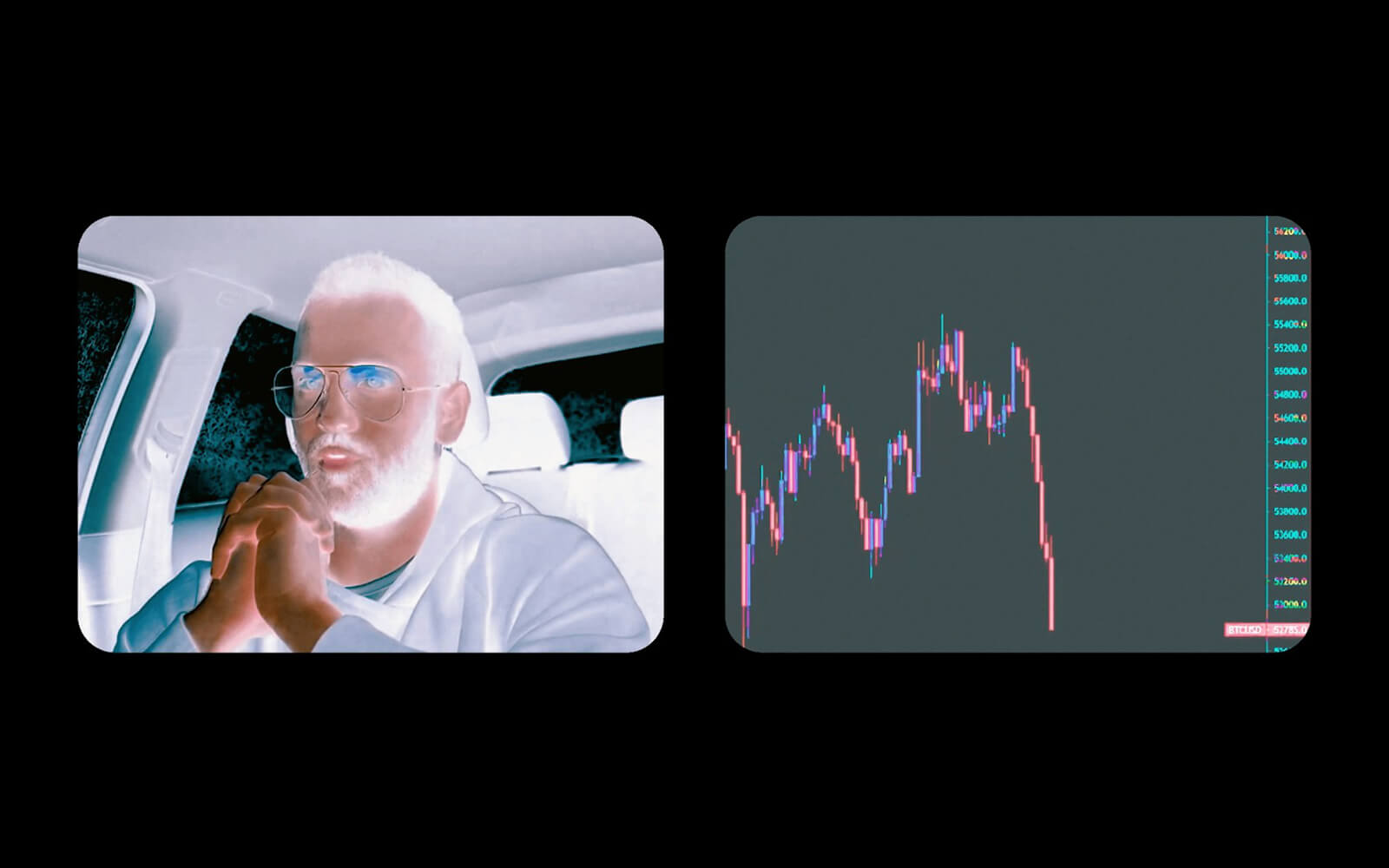
“I wasn’t creating work that was about technology or about the internet or about computers, but about the humans using the computers, myself using computers, my body in front of the computer.”
“I was cosplaying masculinity for years, sometimes pretty well frankly, but the suit literally never fit. So that gives you a different way of thinking, like what’s a better fiction? This is not my true self. This is a better fiction that I would so much rather play.”
Neural 73
Negotiating Values
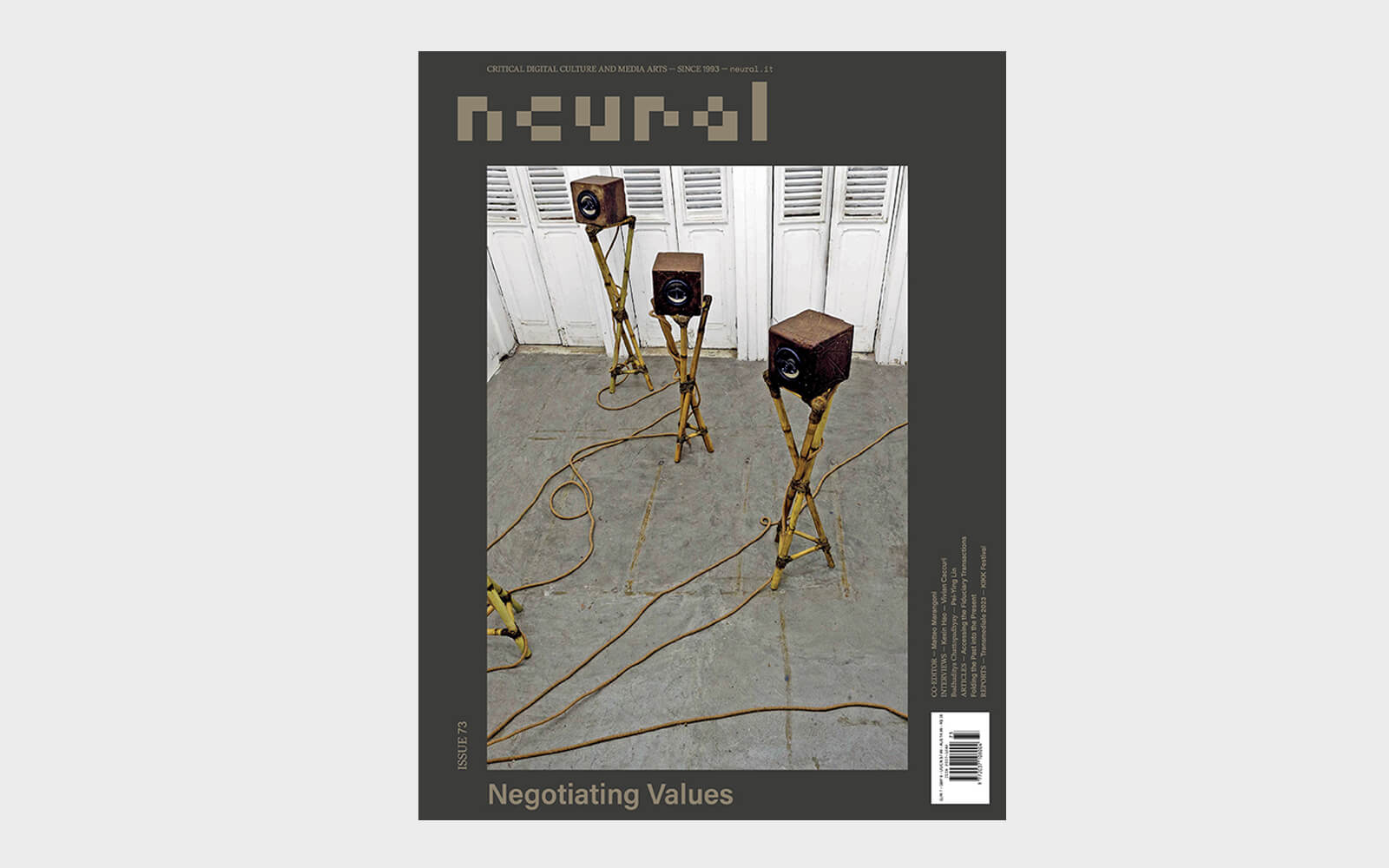
“Tishan Hsu evokes the twinned ways that technology both estranges and enlivens our bodies. It’s work clearly born of an era in which cyborgian devices—pacemakers, nebulizers, insulin pumps—are enabling longer lives. How miraculous, and how bizarre.”
Martina Menegon’s interactive self-portrait I’m sorry I made you feel that way (2023) opens at discotec, Vienna, exploring new forms of care for our hybrid selves. Menegon’s blobby CGI avatar, generated with AI and personal biometric data, will show signs of deterioration the more the artist’s physical needs are neglected. When stressed, for example, the virtual portrait will refuse interaction and, eventually, dissolve into glitched abstraction. An AR extension adds a sculptural layer, spilling Menegon’s failing frame into the gallery.
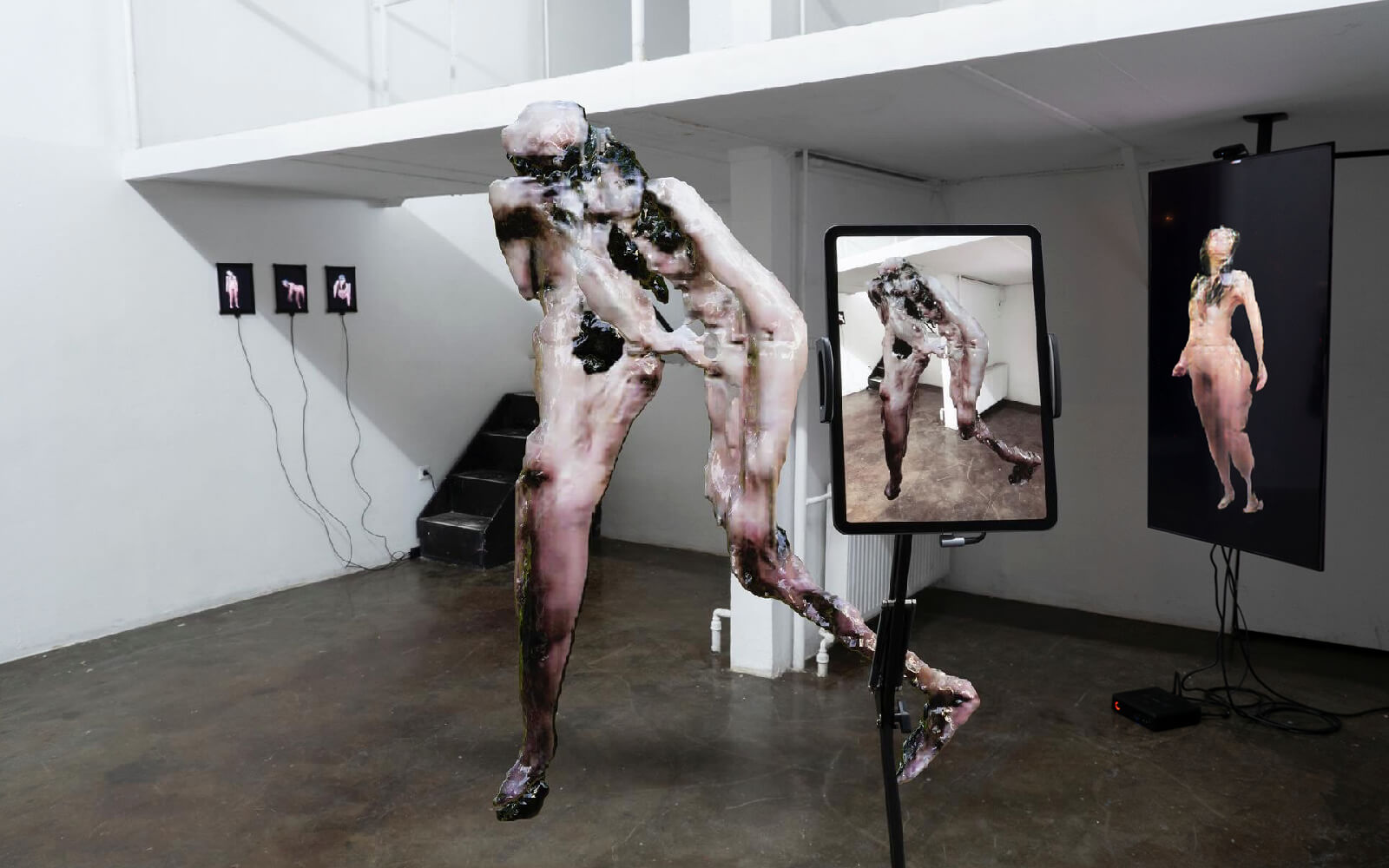
“Due to the high plasticity and adaptability of organoids, Brainoware has the flexibility to change and reorganize in response to electrical stimulation, highlighting its ability for adaptive reservoir computing.”
“The interdisciplinary art practice is your biggest project. Finding your people to nurture and grow together this idea of the practice being the project is what I’m thinking about right now.”
“I have a lot of lab experience, so it’s always funny to me how excited people get when they are exploring things through the microscope. They’re overwhelmed looking at the materials—stones, flowers—they collected.”
Dredging up grotesque imaginaries, Tishan Hsu’s “recent works 2023” opens at Secession in Vienna. Taking centre stage at the artist-run space, the American artist presents tablet-skin-screen (2023, image), an undulating moiré pattern-adorned sculpture that evokes both flesh and (video) feedback. Complementing the unnatural geometry, surrounding morphing videos and prints depict “the interpenetration of physical bodies with virtual digital forms.”
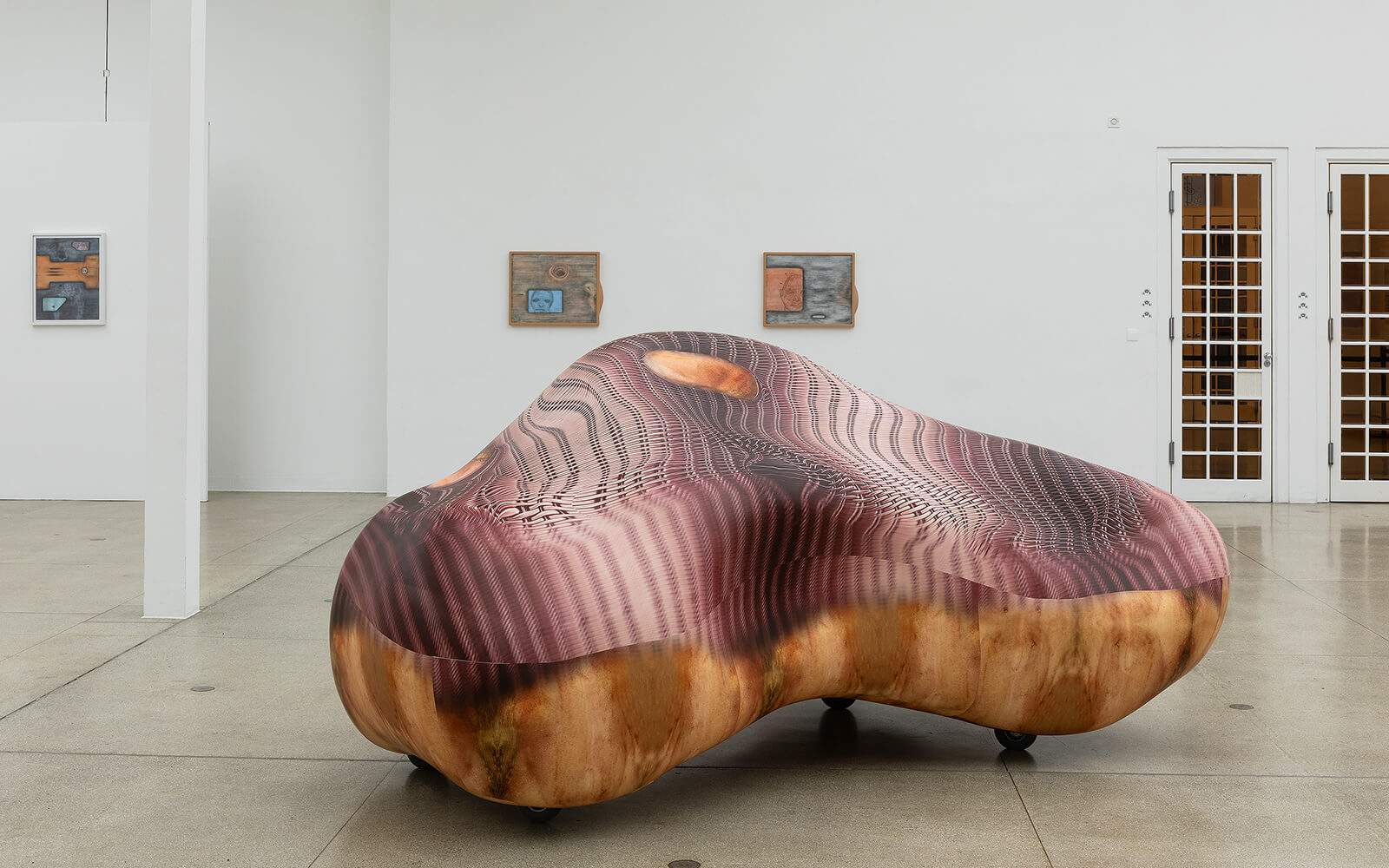
“My theory is that the glitches are very similar to our subconscious. There is too much or too little wanted from us, and we react with psychosomatic problems. When our body glitches, it’s telling us we have to make a decision or change something.”
“Our physical realities, the human body and the planet, are no less real just because technology is taking up more of our attention. We are still embodied, we still look with our eyeballs, we still type with our hands, and we are still sitting here getting bad posture.”
Zara Rahman
Machine Readable Me
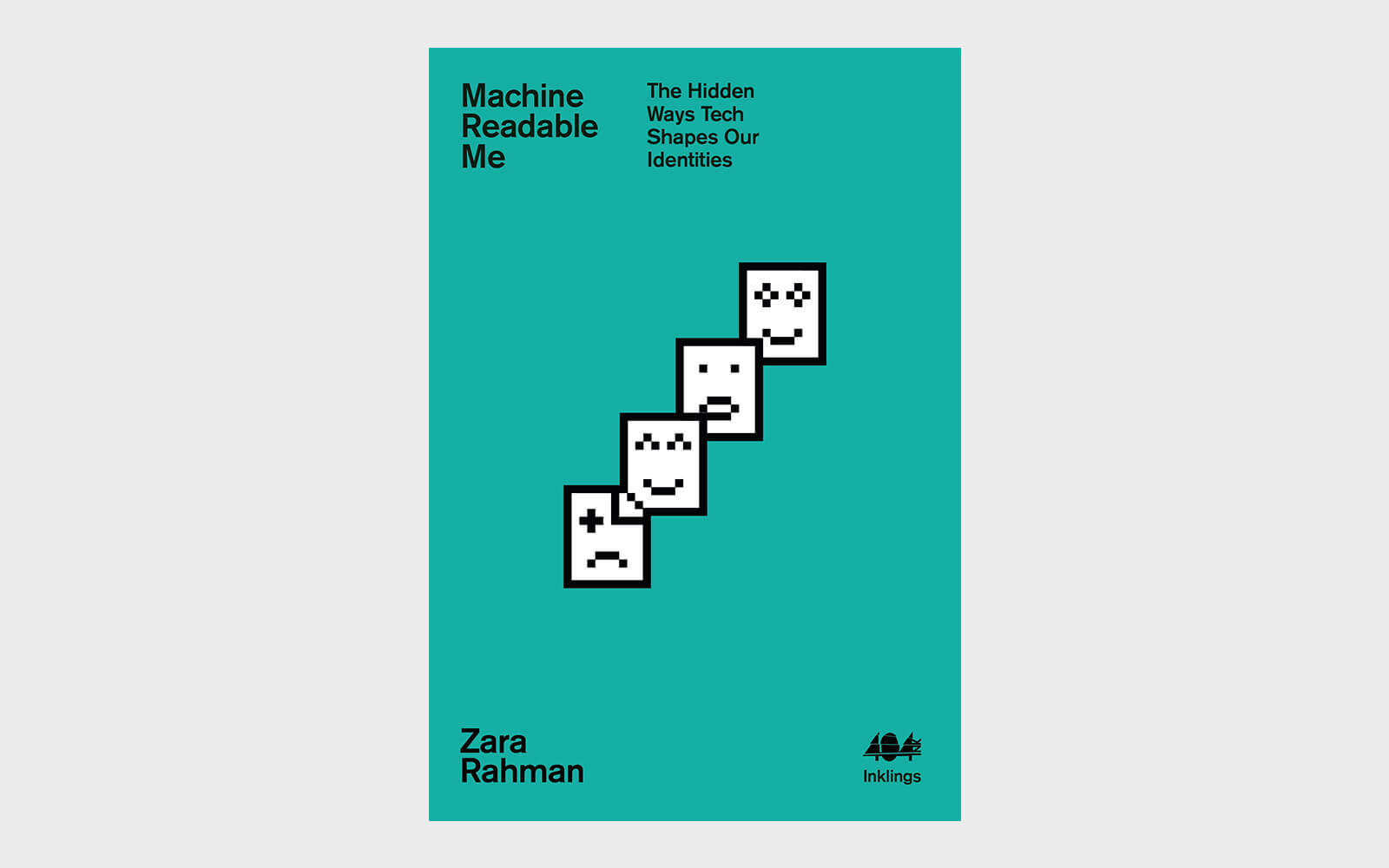
For MIT Technology Review. Cassandra Willyard surveys the state of rapidly advancing artificial womb research. As a promising prototype nears readiness for trials with human embryos, researchers and bioethicists are weighing potential implications on child-rearing. “The most challenging question to answer is how much unknown is acceptable,” says FDA neonatologist An Massaro to Willyard, of concerns that include gauging risk for premature infants and shifting discourse about a woman’s right to choose.
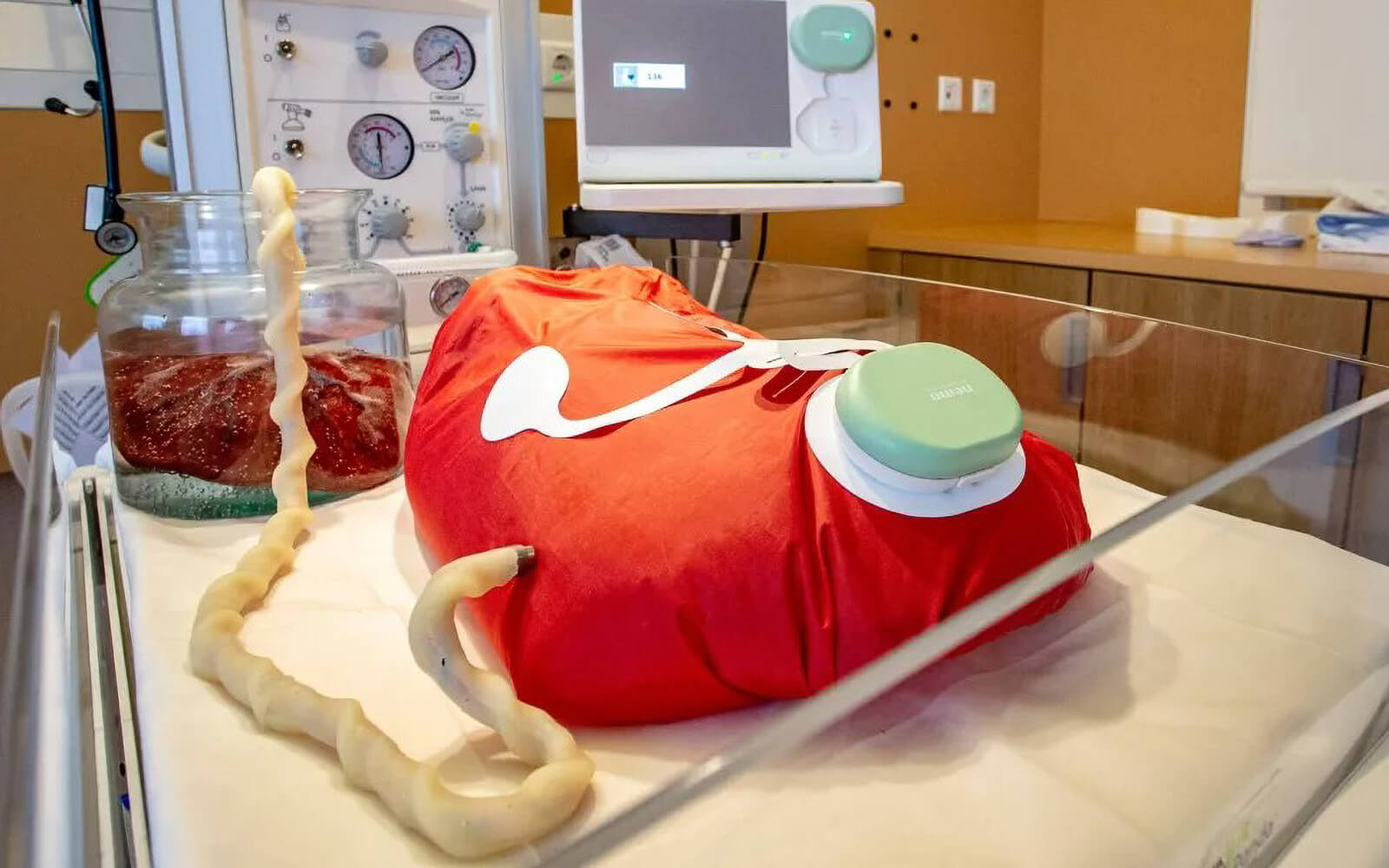
Kashmir Hill
Your Face Belongs to Us
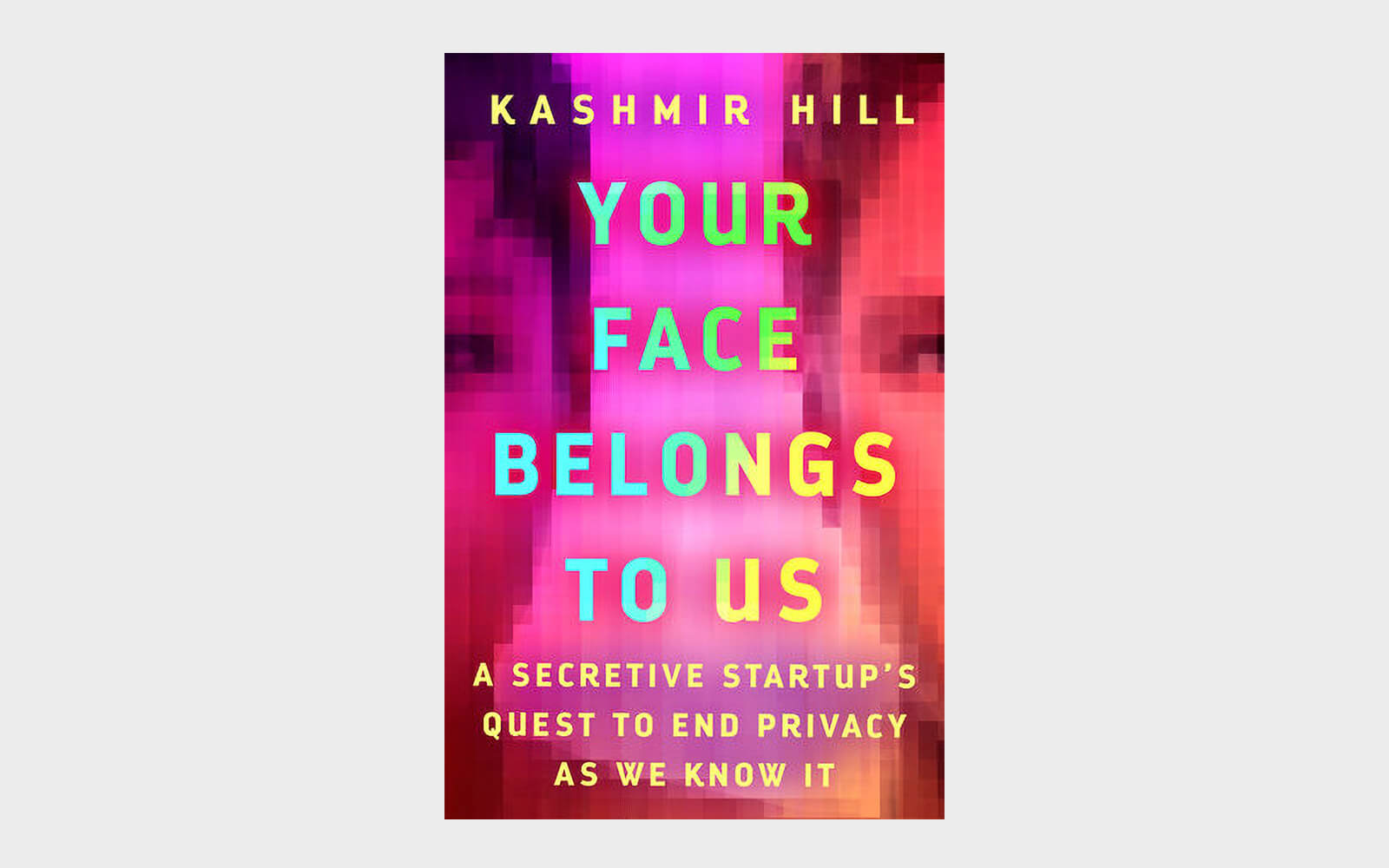
“If a human–pig chimera were brought to term, should we treat it like a pig, like a human, or like something else altogether?”
Anicka Yi’s solo exhibition “A Shimmer Through The Quantum Foam” opens at Esther Schipper, Berlin, evolving the Korean-American artist’s notion of the “biologized machine” with new works. Visitors enter a hybrid ecosystem of fleshy landscapes created with machine learning models and suspended luminescent pods resembling Radiolaria. As the soft glow of an aqueous ooze—indicative of life’s marine origins—sprawls across the gallery floor, a custom-made scent by perfumer Barnabé Fillion fills the air.
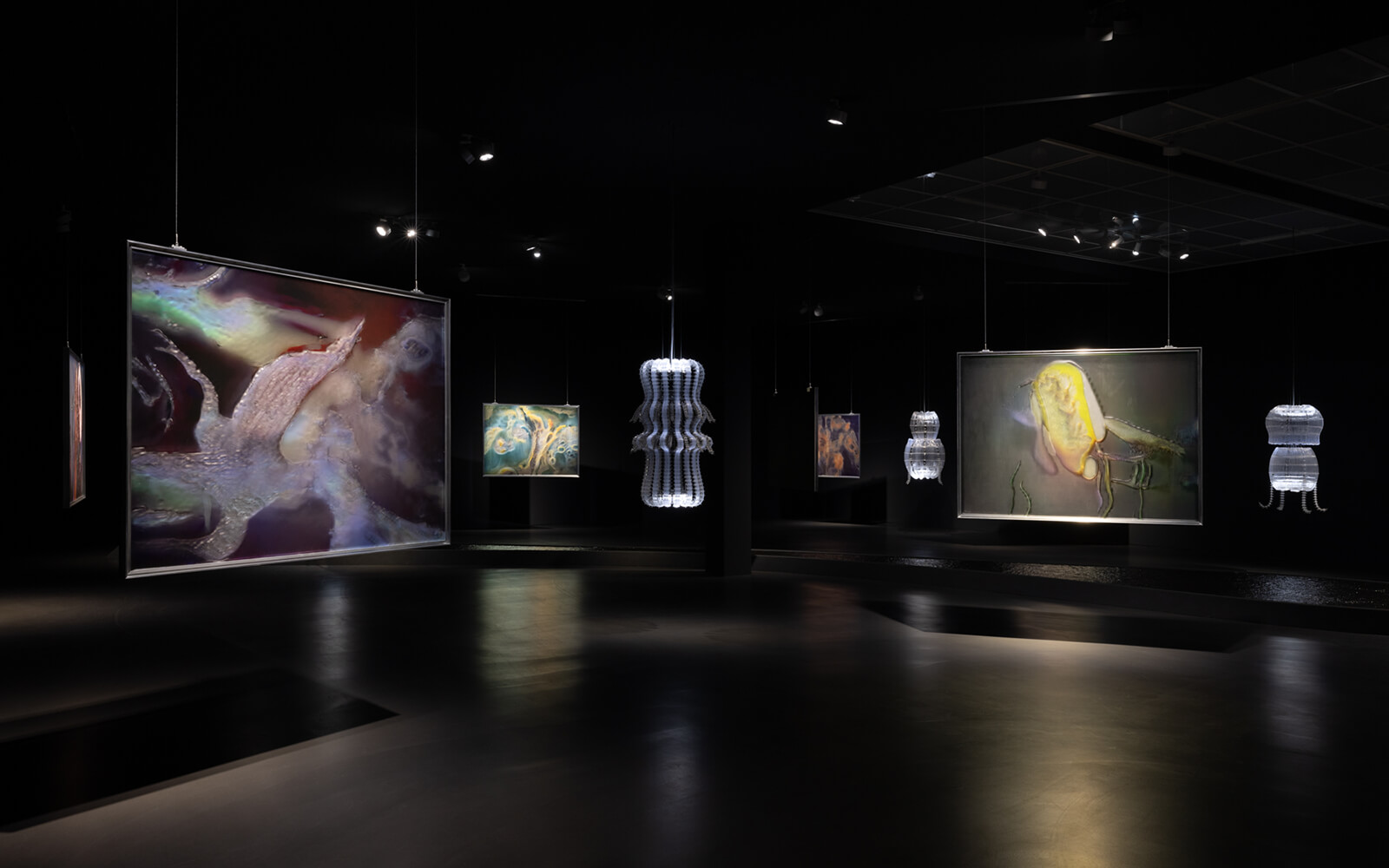
The Hole’s yearly thematic group show, “Fembot,” opens at the New York gallery’s Bowery location, celebrating technology and the female form. “Representations of the female body are as vast as the internet, from futuristic robots to porous, sweaty flesh,” writes gallerist Kathy Grayson about the works of Salomé Chatrior, Auriea Harvey, Jordan Homstad, Faith Holland, Nicole Ruggiero, and others that range from “cyborg goddesses” to post-human grotesques. Case in point: CGI artist Emma Stern’s 3d-printed ‘amphemme’ Brooke (2023, image).
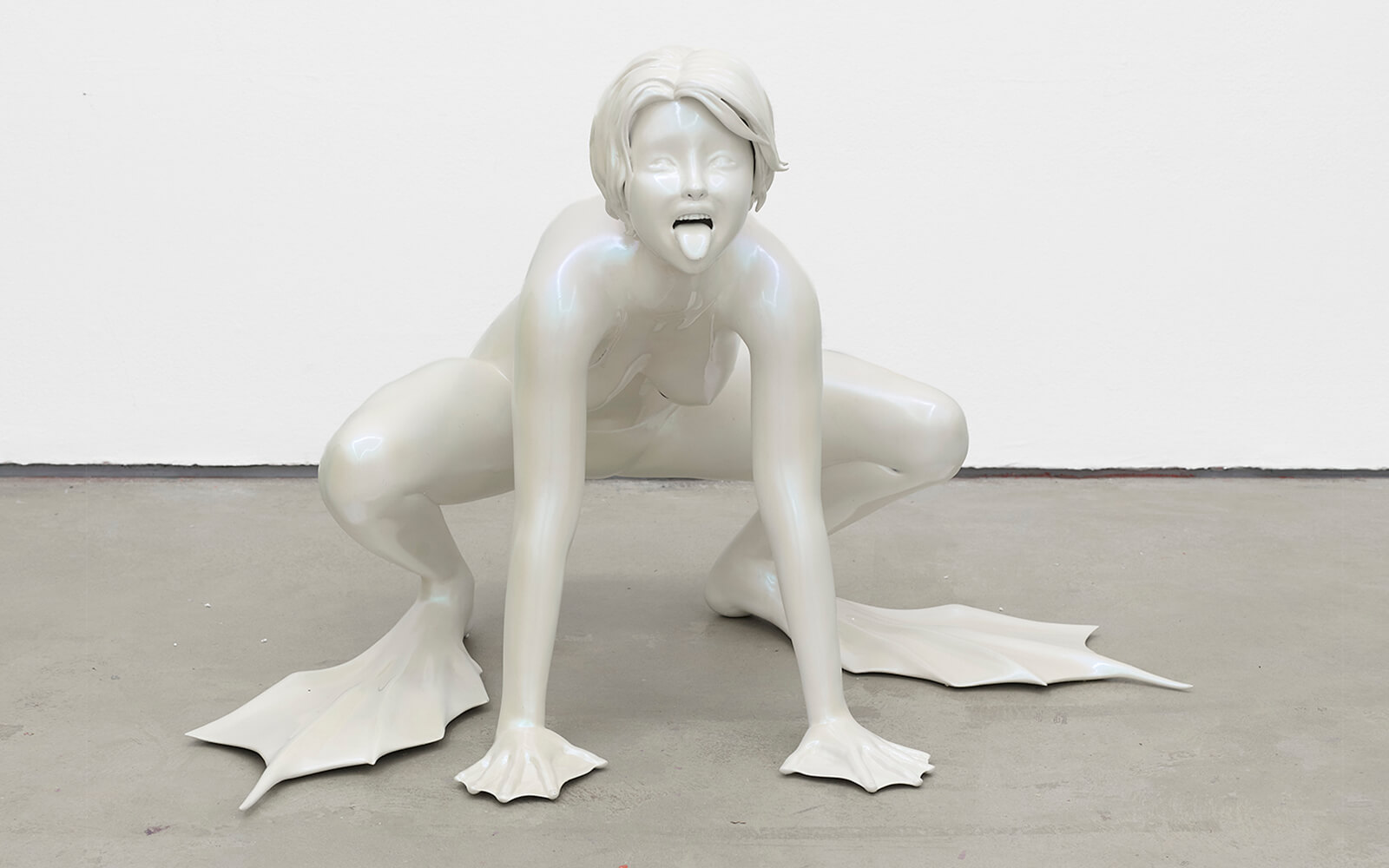
Daily discoveries at the nexus of art, science, technology, and culture: Get full access by becoming a HOLO Reader!
- Perspective: research, long-form analysis, and critical commentary
- Encounters: in-depth artist profiles and studio visits of pioneers and key innovators
- Stream: a timeline and news archive with 1,200+ entries and counting
- Edition: HOLO’s annual collector’s edition that captures the calendar year in print
